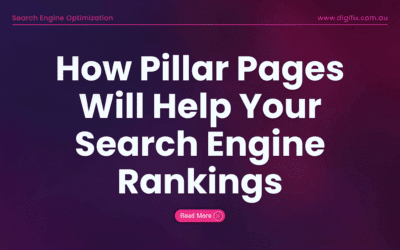What is the importance of HTTPS in Enterprise SEO? Do you know that a secure website does more than just protect your customers’ data? It’s also key to improving your search engine rankings. In today’s digital world, website security is essential. For businesses in Australia, having a secure website boosts your online presence.
Using HTTPS is a basic step in securing your site. It encrypts data between your site and users. It also tells search engines like Google your site is reliable. Studies show sites with HTTPS get more organic traffic, as it’s seen as a ranking factor.
Key Takeaways
- HTTPS is a ranking signal that can improve your website’s visibility in search results.
- A secure website enhances user trust, potentially lowering bounce rates and increasing engagement.
- Implementing HTTPS can lead to a significant increase in organic traffic.
- SSL certificates are available, ranging from free options like Let’s Encrypt to paid services.
- HTTPS protects sensitive information and ensures data integrity.
Understanding The Importance of HTTPS and Website Security
Exploring HTTPS is key to keeping your website safe and trustworthy. We’ll cover the basics of HTTPS, its role in protecting user data, and the differences between HTTP and HTTPS.
What is HTTPS and How Does it Work?
HTTPS, or HyperText Transfer Protocol Secure, adds security to HTTP by encrypting data. This encryption is thanks to SSL/TLS certificates. These certificates verify a website’s identity and keep data safe and untampered.
SSL Certificates and Encryption Basics
SSL certificates are given by trusted Certificate Authorities. They contain a website’s public key and identity details. To get an SSL certificate, you need to generate a Certificate Signing Request (CSR) and install the certificate on your server.
How HTTPS Protects User Data
HTTPS keeps user data safe by encrypting it. This is crucial for websites that handle sensitive info, like login details or financial data. Using HTTPS means your users’ data is secure and safe from interception.
The Difference Between HTTP and HTTPS
HTTP and HTTPS differ in security. HTTP sends data in plain text, making it easy to intercept. HTTPS encrypts data, keeping it safe and secure.
Security Vulnerabilities in HTTP
HTTP faces many security threats, like data tampering and eavesdropping. Without encryption, HTTP data can be intercepted and altered by hackers.
Browser Warnings for Non-Secure Sites
Modern browsers warn users about non-secure (HTTP) sites. These warnings can scare users away, hurting your website’s reputation and traffic.
The Importance of HTTPS in Enterprise SEO
Understanding HTTPS is key in enterprise SEO. In today’s digital world, a secure website is essential, not just a good idea.
HTTPS as a Google Ranking Factor
Google values website security highly. HTTPS helps protect user data and boosts your site’s search ranking.
Google’s Official Stance on Secure Websites
Google clearly prefers secure sites in search rankings. An SSL certificate can give you an edge in the Australian market. For more tips, see our guide on SEO-friendly URLs.
Competitive Advantage in Australian Search Results
In Australia’s competitive online space, HTTPS is crucial. It protects users and gives you an edge in rankings.
Trust Signals and User Experience Benefits
HTTPS boosts user trust and experience. The “secure” label in browsers makes users more confident in your site.
Impact on Bounce Rates and Dwell Time
A secure site can reduce bounce rates and increase dwell times. This improves your search rankings.
Building Consumer Trust in the Australian Market
In Australia, trust is key. HTTPS shows you’re serious about security and transparency, boosting customer loyalty.
Key Benefits of HTTPS for Enterprise Websites
Switching to HTTPS makes enterprise websites safer and faster. It’s not just about security. It also makes websites better for users and search engines.
Enhanced Data Security and Privacy
HTTPS keeps data safe by encrypting it. This is key for websites that handle personal info.
Protection Against Man-in-the-Middle Attacks
Man-in-the-middle attacks happen when hackers spy on your website’s data. HTTPS makes this data hard to read, keeping it safe.
Compliance with Australian Privacy Regulations
Australia’s privacy laws demand data protection. HTTPS helps meet these laws, avoiding legal trouble.
Improved Website Performance with HTTP/2
HTTPS often pairs with HTTP/2, making websites faster. HTTP/2 lets many requests share one connection, cutting down on wait times.
Speed Improvements and Their SEO Impact
Fast websites are better for users and search engines. Faster sites can rank higher in search results.
Mobile Experience Enhancement
Most people use mobiles to visit websites. A fast, secure HTTPS site improves mobile browsing, boosting engagement and sales.
Referral Data Preservation in Analytics
HTTPS keeps referral data in analytics tools. Without it, data can be lost, making Google Analytics less accurate.
Solving the “(not provided)” Issue in Google Analytics
The “(not provided)” problem in Google Analytics happens when search engines hide search queries. HTTPS helps by ensuring your site gets referral data securely.
Better Attribution for Marketing Campaigns
With the right referral data, you can see how well your marketing works. This makes it easier to improve your SEO and marketing plans.
Implementing HTTPS Across Enterprise Websites
Adding HTTPS to your website is key for better security and SEO. It involves several important steps to make the transition smooth.
Choosing the Right SSL Certificate
Picking the right SSL certificate is vital for your website. The type you need depends on your site’s structure and your specific needs.
Types of SSL Certificates for Enterprise Use
There are many SSL certificates for businesses, including:
- Domain Validation (DV) certificates
- Organization Validation (OV) certificates
- Extended Validation (EV) certificates
- Wildcard certificates
- Multi-domain certificates
Australian Certificate Authorities and Options
In Australia, you can get SSL certificates from CAs like DigiCert or GlobalSign. Look at the certificate’s validity, compatibility, and support when choosing.
Migration Planning and Execution
Having a good plan is crucial for HTTPS success. This includes a redirect strategy, updating links, and telling search engines about the change.
Creating a Comprehensive Redirect Strategy
A good redirect plan makes sure users and search engines find your HTTPS site. Use 301 redirects from HTTP to HTTPS.
Updating Internal Links and Mixed Content
Make sure all internal links use HTTPS for a smooth user experience. Also, fix any mixed content issues to avoid security warnings.
Communicating Changes to Search Engines
After switching to HTTPS, tell search engines like Google. Use Google Search Console and update your sitemap to do this.
Common Implementation Challenges for Large Websites
Big websites face special challenges with HTTPS, like dealing with old systems and planning resources.
Managing Legacy Systems and Integrations
Old systems might not work with HTTPS or need extra setup. Check your systems and plan well to avoid problems.
Resource Planning for Enterprise-Scale Migration
Big migrations need lots of resources, like time, people, and money. Good planning is key for a smooth move. For tips on improving your website, check out Digifix.
Measuring the SEO Impact of HTTPS Migration
Knowing how HTTPS migration affects your SEO is crucial. After switching, it’s vital to watch various metrics to see if it worked.
Key Metrics to Monitor
To measure SEO impact, focus on these key metrics:
- Rankings and Organic Traffic: Watch how your website’s rankings and organic traffic change. See if HTTPS boosts your visibility.
- Crawl Errors and Indexation: Keep an eye on crawl errors. Make sure your HTTPS pages are indexed right by search engines.
- Page Load Speed: Check if page load speed changes. HTTPS migration might slow things down if not done right.
Tracking Rankings and Organic Traffic Changes
Use Google Search Console and Analytics to track changes. A good HTTPS migration should keep or improve your rankings.
Monitoring Crawl Errors and Indexation
Check Google Search Console for crawl errors. Make sure your HTTPS pages are indexed right. This keeps your site visible in search results.
Measuring Page Load Speed Differences
Use Google PageSpeed Insights to check page load speed before and after. Optimizing images and using browser caching can help speed up your site.
Addressing Post-Migration Issues
Even with careful planning, problems can happen after migration. It’s important to fix these quickly to avoid SEO harm.
Troubleshooting Common SEO Problems
Issues like mixed content warnings, canonicalization problems, and crawl errors can pop up. Use diagnostic tools to find and fix these problems fast.
Case Studies from Australian Enterprise Websites
Many Australian enterprise websites have moved to HTTPS and seen SEO benefits. For example, a top Australian retailer saw a big boost in organic traffic after switching.
Conclusion: Future-Proofing Your Enterprise SEO Strategy
Adopting HTTPS is key to boosting your website’s visibility and credibility. It makes your site more competitive and keeps it up-to-date with SEO trends.
A secure website is now essential for SEO. Google values HTTPS highly, making it a must for a good ranking. It also protects user data and boosts your site’s search engine standing.
To keep your SEO strategy strong, focus on HTTPS, track important metrics, and learn about new SEO practices. This way, you’ll stay ahead and keep your online presence safe and visible.





0 Comments